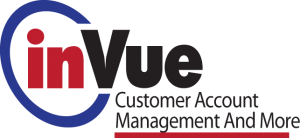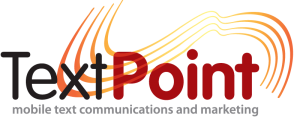Get Sticky! Don't Take Chances on Customer Retention
Posted: 02/01/17
By Richard Rutigliano, PriMedia, Inc.
When you're trying to solve your most important problems, it helps to reach for the best tools.
In the propane business, nothing promotes profitability more than a high customer retention rate and strong sales within the customer base. A modern loyalty rewards program that leverages Internet technology is the ideal tool for keeping your customers loyal and selling them more of your products and services.
A traditional, offline rewards program improves customer retention, but it has limitations. For example, it might award points only on select, predetermined occasions, such as the renewal of a service contract. That slow, predictable approach performs the basic function - delivering the loyalty credit - but it lacks sizzle. There is no element of surprise, and often only one redemption option: a savings on an equipment installation that might occur once every 15 years.
A simple, low-key program was an excellent choice when customers were more loyal, but you need something more enticing for today's ultra-competitive marketplace. To get customers' attention in 2011 - and keep it - there is no substitute for a flexible, high profile program that actively engages customers and supports your entire marketing agenda. It should also offer redemption opportunities in the near future. In a recent survey by Maritz Loyalty Marketing, 70 percent of respondents who abandoned a loyalty program said the main reason they left was that it was taking too long to accumulate points.
Large Retailers Set the Standards
Loyalty programs are everywhere today. The average U.S. household participates in 14.1 loyalty rewards programs, according to a 2009 study by Colloquy, a loyalty-marketing researcher and publisher. A separate poll by AdGenesis, conducted in 2010, showed that 61 percent of respondents had joined between one and five rewards programs in the prior year.
Programs are run by airlines, restaurants, grocery stores, credit card issuers, and many other types of business. Rewards can take the form of frequent flier miles, point-of-sale discounts, cash-back rewards, free products, gifts and more. The most widely used programs are run by large retailers, and there is often a high degree of sophistication and plenty of opportunity for online activity. Customers can log in to a rewards website to check their point totals, view prize options, and make redemptions.
A recent survey by the Chief Marketing Officer (CMO) Council indicates that loyalty programs can strongly influence consumers' buying decisions. Twenty-one percent of respondents said that loyalty program membership "strongly motivates my repeat business or visits." Another 30 percent said that a program is "usually a big factor in my decision making."
By making a program interactive and motivating customers to visit the online rewards pages, a company extends the value beyond customer retention. The program not only inspires brand loyalty; it brings customers to the company website, creating excellent opportunities to market additional services and products.
Equally important is the flexibility. When a company uses awards strategically, they can motivate customers towards favorable choices. For example, if you wanted to increase water purifier sales this summer, you could post a short-term coupon that offers markedly better value than your other prizes do among your loyalty rewards. You could then send a notification to your rewards customers describing the special offer and linking them to an online article about the benefits of clean tap water.
Elements of a Strong Loyalty Program
When a smaller business like a plumbing company steps into the loyalty rewards arena, they should do their best to meet the expectations created by national and global companies. Here is a look at some of the best practices in loyalty rewards marketing.
- Frequent Activity: A loyalty points program should award points on a regular basis, so that customers receive reminders many times each year. Without those regular reminders, it's easy for a customer to forget about your loyalty program.
- Visibility: Notifications should be noticeable and clearly labeled in order to achieve their goals. The program is an incentive to keep customers loyal, and it works only when the customer understands the program and feels invested in it.
- Online Account Management: A loyalty rewards program should drive traffic to your website. By creating an online portal where customers can manage their reward points and integrating it with your website, you bring customers into your online domain. By keeping the rewards program section fresh with your current specials and news about your latest products and services, you expose your customers to timely marketing. A 2010 survey of frequent travelers by Loylogic indicated that 58 percent of respondents want to be able to redeem their rewards online.
- E-Mail Harvesting: By creating the loyalty points management and redemption online, you give customers a compelling reason to give you their e-mail addresses. If you have been stymied in your efforts to build an e-mail list, an online rewards program could provide the jumpstart you need.
- Flexibility: The company should be able to create its own standards for awarding points and introduce some complexity without creating a bookkeeping nightmare. The system must be easy to customize so that you can award bonus points on the fly for referrals, promotions or to track response to a special offer. We don't recommend that you use loyalty points as the primary compensation for an inconvenienced customer, but a points award can be a nice cherry on top.
- Automated Accounting: Unlike an offline rewards program that creates more bookkeeping work for your staff, an online program can manage your point awards and customer accounts automatically. It should also auto-send notifications to customers whenever you award them points. It is a good idea to require an administrative signoff on all point redemptions to guard against errors.
- Multiple Redemption Options: One of the best parts of being in a loyalty program is choosing how to spend your points. Companies should offer a satisfying range of redemption options, including prizes that have nothing to do with your company's services. The 2010 Loylogic survey of frequent travelers indicated that 22 percent of customers want more redemption options in their rewards programs.
- Cross-Selling: A diversified company can use its rewards program to introduce customers to services they have never used. Expand your redemption options to include very tempting offers for first-time use of a service you offer. At the same time, build promotional content into the loyalty program section so that you expose customers to all your services.
- Social Media Integration: A rewards program can be a great opportunity to generate some good publicity in social media. When you notify customers via Facebook that they have received new reward points, their friends will see your name in a highly positive context, creating viral marketing opportunities.
Use Points to Support Your Priorities
In addition to these common elements, a great rewards program reflects the company's priorities. A diversified company can use the program to boost cross sales by weighting the redemption options towards coupons for trying a company specialty for the first time. It can also be integrated with programs such as customer account management, contests and bill presentment.
While the loyalty program is designed to target existing customers, it can also contribute to a pleasing company image that will help you attract prospects. A compelling description of the program on your website and in your materials reinforces your professionalism and enriches your value proposition.
Transitioning from a traditional rewards program to a sophisticated online version is a fairly simple process. After you answer threshold questions about how to translate value from an existing program and how to value the points you will award, you define your range of redemption options. If you have an existing rewards program, honor the terms in your new program. If a customer has been patiently amassing a discount on their next equipment upgrade, assure them that you will honor that commitment. At the same time, offer them the full range of redemption options.
It is not necessary to replace or upgrade your website when implementing an online loyalty program, but it's a good idea to evaluate what you have. One of the major benefits of driving customers to your website is to make great impressions. Customers who haven't seen much of your site before ought to be impressed - the more so the better. They should also be inspired to buy more services, which means the rewards program section of your site ought to be optimized for cross-selling.
Plan on using the rewards program launch as a major customer outreach event. Send customers a letter or two, and place articles in the next few issues of the company newsletter to get the word out. Be sure to include notices about your new loyalty program on your website, in your on-hold messaging, and as a footnote to all your email communications. Tell them about more than the program itself: Talk about all the steps you've taken lately to serve customers more effectively.
PriMedia has been helping small and medium-sized companies implement their loyalty and customer retention programs for almost 20 years. We've used that expertise to develop OnPoint, a customizable, flexible customer rewards program. With OnPoint, you can offer your customer automatic dollar-to-point credits on every purchase as well as promotional bonus points, track promotion effectiveness with custom codes, provide unlimited redemption awards, announce transactions on the customer's Facebook newsfeed, monitor each account's redemption activity, and so much more. Your customers will stick with you, as they earn and use these valuable points. Call PriMedia today at 800-796-3342 to schedule your free, no-obligation OnPoint demonstration.
Richard Rutigliano is President of PriMedia, Inc., a full service marketing and communications firm with offices in New York City, Long Island and Boston. The company is now offering free marketing consultations to Oilheat retailers. Phone: 800-796-3342, or visit their Web sites at www.primediany.com and www.propane-advertising.com.












